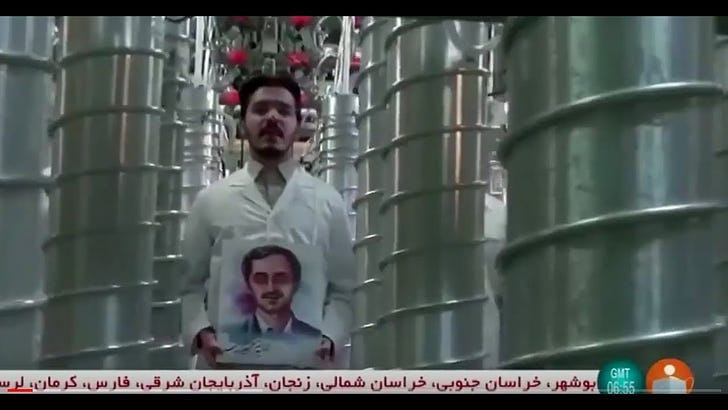Going Nuclear
A timeline of sabotage and assassinations against Iran’s nuclear program

Jan. 2006
Late 2007-July 2010
A digital weapon known as Stuxnet was unleashed by the U.S. and Israel against the computers controlling centrifuges at the Natanz faculty in Iran. The first version was unleashed in 2007, which closed exit valves on the centrifuges so gas could get in but not out. A second version of Stuxnet was unleashed in 2009 and 2010, which caused the centrifuges to speed up and slow down, damaging some of the centrifuges and sabotaging the enrichment process.
Nov. 29, 2010
Majid Shahriari, 40-year-old professor of nuclear physics was on his way to Shahid Beheshti University, where he was a lecturer. In the car were his wife, also a nuclear physics professor, and their bodyguard. As the sedan approached a busy intersection, assailants on a motorcycle pulled alongside the car and slapped a “sticky” bomb to the driver’s-side door. Shahriari was killed; his wife and bodyguard were injured. Shahriari was an expert in neutron transport—essential to creating nuclear chain reactions for reactors and bombs. Only political appointees ranked higher than Shahriari in Iran’s nuclear program.
Minutes later, in another part of Tehran, Fereydoon Abbasi, a 52-year-old expert in nuclear isotope separation, was driving to the same university when he saw a motorcycle approach his car and heard something being attached to his door. Abbasi, a member of Iran’s Revolutionary Guard, quickly leapt from the car and pulled his wife from her seat. The two were injured, but survived. Abbasi was one of only a few specialists in Iran who with expertise in separating uranium isotopes, a core part of the uranium enrichment process. He was also on the UN Security Council’s sanctions list for his role as a senior scientific adviser to Iran’s Ministry of Defense and for his close working relationship with Mohsen Fakhrizadeh-Mahabadi, an officer in the Iranian Revolutionary Guard.
November 2011
A massive explosion occurred at a long-range-missile testing site in Iran killed more than thirty members of Iran’s Revolutionary Guard, including a general who was said to be the architect of Iran’s missile program. Iran claimed the explosion was an accident, not sabotage.
January 2012
Motorcycle assassins struck again, this time killing Mostafa Ahmadi Roshan with an explosive attached to his car. An Iranian official revealed that he managed the Natanz facility and also procured special equipment for Iran’s nuclear program.